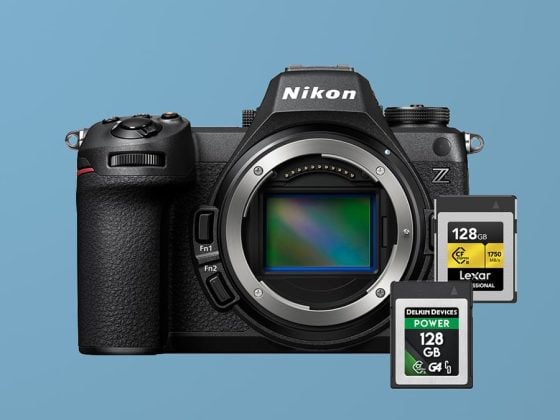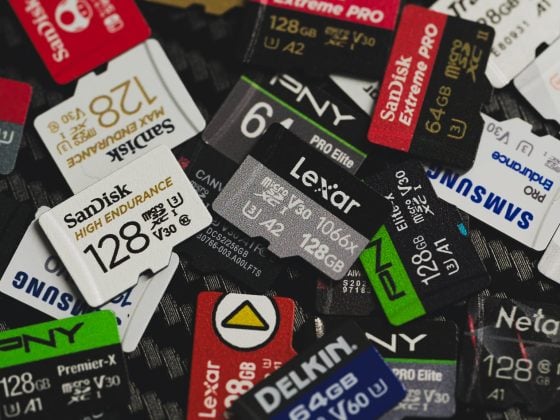
I’ve run many of the most popular SD memory cards through my speed test for the Olympus E-M5 II. Surprisingly the results are pretty even with no particular card shining out above the rest. This is pretty common on many cameras that seem to bottleneck the write speeds like the Olympus. The Sony cameras do this as well.
Best Memory Cards Olympus EM-5 Mark II
So take the speed comparisons from this camera test and compare them to the USB 3.0 tests to see what will work best for you.
Only thing I didn’t do for this camera yet was too test the UHS-II memory cards. I didn’t know at the time of testing this camera but it actually works with UHS-II cards.
Olympus E-M5 Mark II SD Memory Card Speed Tests
The first two speeds listed are done with the USB 3.0 in the MacBook Pro. The next speed is actually done in the Olympus E-M5 II camera itself.
Please do not use this data without linking or properly crediting this page.
| SD Memory Cards | USB 3.0 Read | USB 3.0 Write | E-M5 Mark II Write Speeds |
| Sandisk Extreme Pro 64GB SDXC Class 10 / U3 | 89.0 MB/s | 84.7 MB/s | 36.33 MB/s |
| Kingston 64GB SDXC Class 10 / U3 | 88.1 MB/s | 74.3 MB/s | 36.31 MB/s |
| Sandisk Extreme Plus 64GB SDXC Class 10 / U3 | 88.9 MB/s | 62.0 MB/s | 36.25 MB/s |
| Transcend 64GB SDXC Class 10 / U3 | 87.7 MB/s | 64.1 MB/s | 35.99 MB/s |
| Lexar 600x 64GB SDXC Class 10 / U1 | 85.6 MB/s | 60.1 MB/s | 35.86 MB/s |
| Sandisk Extreme 64GB SDXC Class 10 U/3 | 71.3 MB/s | 52.1 MB/s | 35.67 MB/s |
| PNY 64GB SDXC Class 10 / U1 | 86.1 MB/s | 54.5 MB/s | 35.64 MB/s |
| Sony 64GB SDXC Class 10 / U3 | 87.2 MB/s | 71.9 MB/s | 35.51 MB/s |
| Samsung Pro 64GB SDXC Class 10 / U1 | 86.8 MB/s | 77.2 MB/s | 35.37 MB/s |
Speed Test Results
Almost always the Sandisk Extreme Pro and the Kingston are my two fastest cards.
This was the first time I’ve ever had the Samsung come in last, although it’s a great card in terms of USB speeds as well as how it performs in other cameras. I’m starting to think some of the variation could have to do with how well the card is seated in the camera. I try keep the pins clean and never use these cards for daily use but who knows.
My top four favorite cards are probably the Sandisk Extreme Pro, the Kingston, the PNY, and the Samsung. Although lately I’m starting to like the Transcend. PNY also makes a new U3 card but I can’t find it here in the US. Only in the UK.
UHS-II Cards For The Olympus E-M5 II
Unfortunately I did not have UHS-II cards when I was testing this camera. An major overlook on my part and I apologize. I now have a lot of UHS-II cards and will test them soon.
If you’re trying to decide if you want to use UHS-II or UHS-I, I can tell you from my experience, you don’t really notice the speed difference between UHS-II and UHS-I cards as long as your using fast UHS-I cards. I’ve even had some of my UHS-I cards perform better than UHS-II cards in camera.
From my other tests with other cameras, the Lexar 2000x, Delkin and Sandisk Extreme Pro are the best performing UHS-II cards – In that order. The Lexar 1000X card is actually a little slower than the Sandisk Extreme Pro UHS-I card. So keep that in mind.
Best SD Memory Cards For The Olympus E-M5 Mark II
Bang For The Buck / Best SD Card Deals
I recommend these cards if you’re on a budget. I like the Samsung because it seems a little bit more rugged. The price of the PNY and Transcend are unbeatable. The Lexar and Sony are also pretty nice cards too but don’t always perform great in other cameras.
Samsung Pro 64GB SDXC UHS-I Class 10 / U1 – (Amazon)
PNY 64GB Elite Performance UHS-I SDXC Class 10 / U1– (Amazon) (Adorama)
Transcend 64GB UHS-I SDXC Class 10 / U3 – (Amazon) (Adorama)
Top Shelf / Best SD Cards
It seems Sandisk makes the best cards out there. The Extreme Pro is always my go to. But in a close second the Kingston is also really good and sometimes performs better.
Sandisk 64GB Extreme Pro UHS-1 SDXC U3 90MB/sec – (Amazon)
Kingston 64GB UHS-I SDXC U3 90MB/s – (Amazon) (Adorama)
E-M5 II Burst Speeds
Rated at 10fps in high speed shooting mode and 5fps with autofocus, or standard burst mode.
From my experience, even with the fastest cards shooting JPEG, it will shoots 10fps for about 10 frames then it slows to about 7-8fps. Which is still pretty good.
In RAW it will shoot 10fps for 10 frames, then slow down to about 3-4 frames per second.
In RAW+JPEG it will only shoot 3 frames per second after those first 10 frames.
That’s with UHS-I cards.
SD Memory Card Numbers And Ratings
You might see a few numbers on your card and I’ll briefly go over what they all mean.
U1 vs U3
When you see U1 or U3 this really just has to do with minimum write speeds. U1 at 10MB/s and U3 at 30MB/s.
This doesn’t always mean the U3 cards will be faster, but often times they are. It just means that no matter how full or how fragmented a card is, it should still perform at that minimum speed.
Class 10
Pretty much now days you’ll want a Class 10. Anything lower is old and will be slow. Class 10 also has a minimum speed of 10MB/s
SDXC vs SDHC
This has to do with how the card is formatted. SDXC is exFat64 where as SDHC is Fat32.
SDXC cards are always going to have a minimum size of 64GB. The exFAT64 file structure will mean that you can also record video clips larger than 4GB.
SDXC is also required to work with some video codecs like Sony’s XAVC S. This is sort of irrelevant for this type of camera.
But as a recommendation try to get SDXC cards to ensure longevity for future codecs or camera requirements. They’re not that expensive anymore.
UHS-I vs UHS-II
UHS-II cards have an extra set of pins and are often much quicker. Prices over the last few years have gone down significantly, so they might be actually worth buying now.
SD Memory Card For Video
If you shoot video on the Olympus you actually don’t need a faster card. The data rate of video is much slower than what you’ll get when shooting a burst of RAW files so any of the cards listed will work fine.
Best SD Memory Cards Olympus E-M5 II Conclusions
I’ve been testing memory cards on cameras for a long time now and typically as long as you buy new cards, you’ll be fine. Stick with the brands you’ll like and you probably won’t notice the difference. However, the Sandisk Extreme Pros are always the best performing cards with the UHS-I bus. Lately the top level Lexar cards are performing the best with UHS-II bus speeds.
As far as U3 vs U1 and SDHC vs SDXC, try to just buy U3 and SDXC cards now. U1 are getting older now and newer cameras like the Sony A7rII are requiring U3 and SDXC cards for shooting internal 4k video. You never know, Olympus could end up doing something like this, so you might as well invest in something that will last you a few years.
If I can get this article to rank more, I’ll start doing a lot more tests with this camera. Right now, it’s just not worth my time and the money, so if you want to see more tests, like and share this page.
More About The Olympus E-M5 II
I’ve also created a Olympus E-M5 II Accessories List showing some of the better accessories for this camera. I really like the screen protectors on there and also there are some new half cases that have just been released.
| **This website contains affiliate links. We will earn a small commission on purchases made through these links. Some of the links used in these articles will direct you to Amazon. As an Amazon Associate, I earn from qualifying purchases. |




